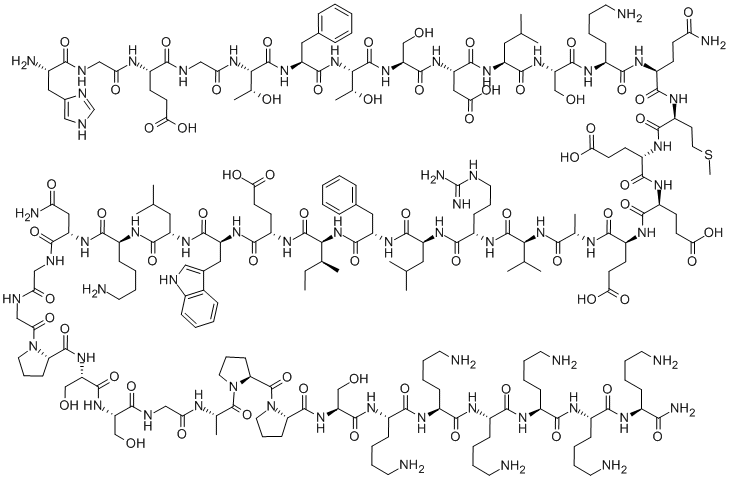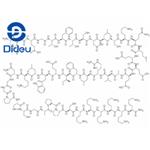Definition
ChEBI: Lixisenatide is a forty-four membered polypeptide consisting of L-His, Gly, L-Glu, Gly, L-Thr, L-Phe, L-Thr, L-Ser, L-Asp, L-Leu, L-Ser, L-Lys, L-Gln, L-Met, L-Glu, L-Glu, L-Glu, L-Ala, L-Val, L-Arg, L-Leu, L-Phe, L-Ile, L-Glu, L-Trp, L-Leu, L-Lys, L-Asn, Gly, Gly, LPro, L-Ser, L-Ser, Gly, L-Ala, L-Pro, L-Pro, L-Ser, L-Lys, L-Lys, L-Lys, L-Lys, L-Lys, and L-Lys-NH2 residues joined in sequence. Used as an adjunct to diet and exercise for the treatment of adults with type II diabetes. It has a role as a glucagon-like peptide-1 receptor agonist, a hypoglycemic agent and a neuroprotective agent. It is a polypeptide and a peptidyl amide.
Mechanism of action
Lixisenatide is a GLP-1 receptor agonist that works by increasing glucose-dependent insulin release, decreasing glucagon secretion, and slowing gastric emptying.Insulin glargine works through regulation of glucose metabolism. Specifically, insulin lowers blood glucose by stimulating peripheral glucose uptake, especially by skeletal muscle and fat, and by inhibiting hepatic glucose production.
Pharmacology
Lixisenatide acts as an agonist at the GLP-1 receptor. In the pancreas, this agonism results in increased glucose-stimulated insulin exocytosis by beta islet cells. This produces a reduction in blood glucose due to increased glucose uptake by tissues 1. GLP-1 receptor activation in the GI tract results in delayed gastric emptying which is thought to mediate the effects of lixisenatide on postprandial blood glucose.
Safety
The most common adverse reactions associated with lixisenatide during clinical trials were hypoglycemia, allergic reactions, nausea, nasopharyngitis, upper respiratory tract infection, and headache.



